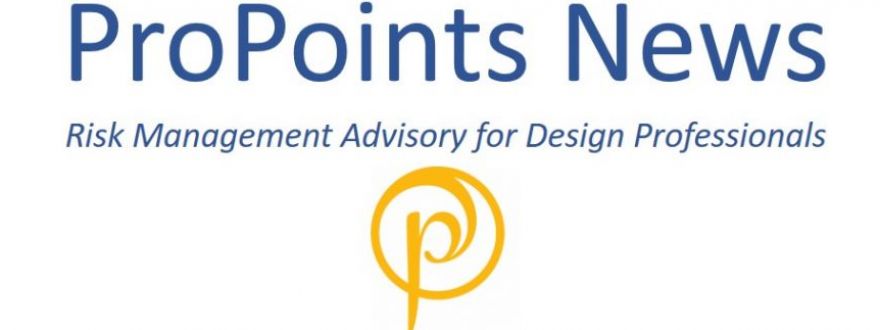
By David B. Kosakoff, Esq. on behalf of A/E ProNet
- Sinnreich Kosakoff & Messina LLP
It is axiomatic that lawsuits are costly. Each step of dispute resolution, from motion practice, document retrieval, depositions, meetings with counsel, and potentially a trial or arbitration result in some form of economic cost. While monetary expenditures are painful, what may be more draining are the indirect expenses created by devoting company resources to litigation instead of ongoing projects, other revenue-generating endeavors, or business development.
Even worse, the great majority of cases are not disposed of quickly. Absent a technical defense, it can be expected that considerable personal and economic resources will be dedicated to defending a claim. In fact, even early victories can result in an appeal, with additional time and money spent, along with added uncertainty.
Lawsuits therefore are among the worst kinds of business risk: they are at once expensive, emotionally grueling, taxing on company resources, and the outcome is often uncertain. But there may be a better way to navigate these potentially lengthy battles and uncertain outcomes.
Early mediation is a mechanism that can provide a path to resolution. This forum allows the parties to present their issues to a knowledgeable intermediary who will work with all sides to facilitate a reasonable outcome. Compromise is the key to successful mediation. Early dispositions in litigation are rare, so mediation is designed to facilitate a resolution where no party is the absolute winner or loser. Such an outcome may be emotionally unappealing, particularly where one feels strongly about a claim or defense, but early efforts to bring a dispute to a conclusion can often result in significant savings.
Recognizing the harsh realities associated with conflict, construction industry contract forms reflect as much. They typically include mediation as a condition precedent to litigation or arbitration. When parties to a dispute are serious about early mediation opportunities, both monetary and emotional savings are often the result.
Monetary savings generally benefit the insurance carrier, but are also advantageous to a design professional when insurance policies are up for renewal. The calculus for premiums typically includes costs incurred to address lawsuits, so minimizing legal expenditures may result in significant savings on premiums when carriers evaluate their risk for future years.
Potentially reduced future premiums are not the only way professional liability carriers recognize the cost savings associated with mediation. In fact, most carriers include in their product lines a mediation credit to encourage their insureds to pursue resolution options at an early stage.
Those who have been involved in lawsuits are all too aware of the expense and uncertainty of litigation, which is multiplied in complex suits involving multiple claims and numerous parties. It is therefore the exception rather than the rule that a litigant can extricate themselves from a proceeding short of a trial or arbitration, each of which present significant risk. Expecting a favorable determination at the hands of an independent arbitrator is riddled with uncertaintity. Even more risky is to rely on a jury of strangers to determine a complex dispute. Placing the outcome of a dispute in the hands of people who may lack either the ability or desire to devote their full attention to the issues is a risk that can have dire consequences.
Early mediation can prevent all of this, but the decision to take a mediation process seriously is a business judgment that requires an even consideration of the realities of litigation and other dispute resolution processes. Given the time, expense, and uncertainly of litigation, efforts to resolve disputes voluntarily warrant strong consideration. While mediation cannot force a resolution, it can provide an avenue to position a conflict to a point where a client can weigh the benefits of a negotiated settlement as opposed to a determination by strangers. For business-minded design professionals, mediation is a logical approach to minimize risk.
David B. Kosakoff, Esq., LEED, A.P., is a partner with the law firm of Sinnreich Kosakoff and Messina, LLP. He concentrates his practice primarily on the representation of design professionals in construction related disputes. Mr. Kosakoff is the General Counsel to the AIA Westchester + Hudson Valley Chapter of the American Institute of Architects. He is a frequent lecturer to design professionals and has authored many articles of interest to those professions. In addition, Mr. Kosakoff is a member of the Construction Panel of Arbitrators and Mediators for the American Arbitration Association and also serves as a private mediator.





